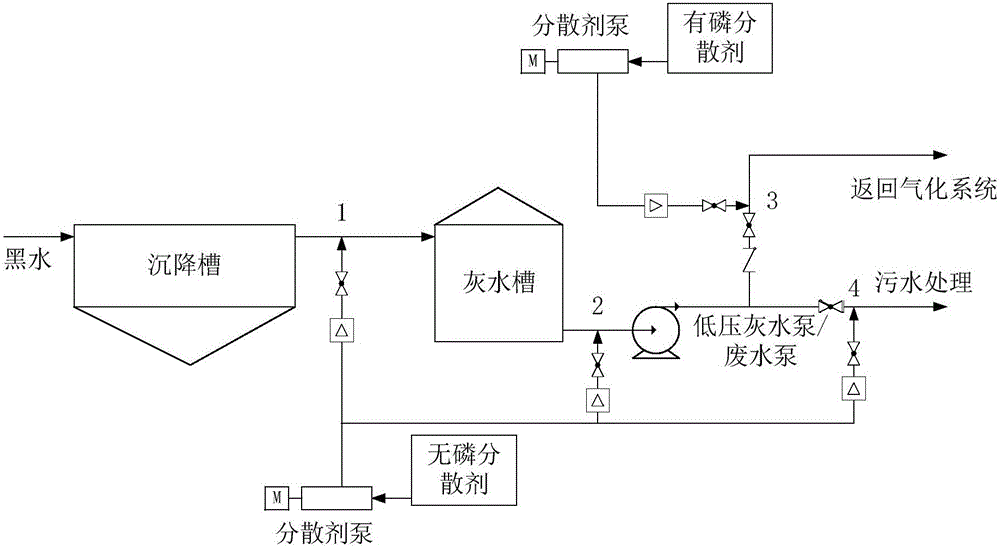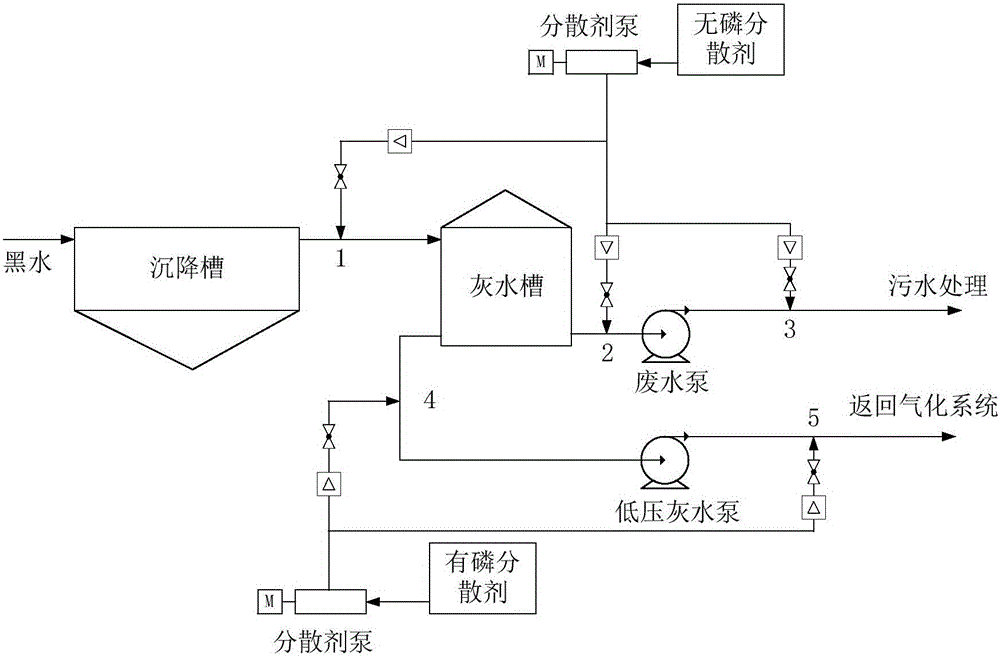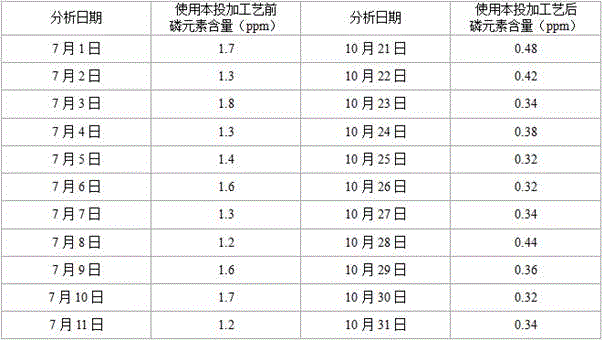Addition technology of zero-phosphorus-low-phosphorus grey water scale inhibition and dispersion agent
A phosphorus-free scale inhibitor and dispersant technology, applied in descaling and water softening, water/sludge/sewage treatment, special treatment targets, etc. Element content, good gray water scale inhibition and dispersion, and the effect of realizing environmental protection discharge
- Summary
- Abstract
- Description
- Claims
- Application Information
AI Technical Summary
Problems solved by technology
Method used
Image
Examples
Embodiment 1
[0018] The phosphorus-free scale inhibitor dispersant in this example is: in terms of mass percentage, 30% of AA / AMPS / HPA terpolymer, 20% of polymaleic acid, 20% of T225, 30% of polyepoxysuccinic acid, mixed uniformly at room temperature , add water to dilute to a solution with a solid content of 25%.
[0019] The low-phosphorus scale-inhibiting dispersant in this example is: in terms of mass percentage, phosphoryl copolymer 20%, maleic acid styrene sulfonate copolymer 20%, PBTCA 30%, polyacrylic acid 30%, mix well at room temperature, add water Dilute to a solution with a solid content of 25%.
[0020] The above-mentioned non-phosphorus scale inhibitor dispersant and low phosphorus scale inhibitor dispersant were tested in Jiangsu Thorpe gasification unit in July 2015. figure 2 As shown in the process flow chart, after the non-phosphorus scale inhibitor dispersant is pressurized to 0.5Mpa by the dispersant pump, it is sent all the way to the overflow pipe 1 of the settling ...
Embodiment 2
[0025] The non-phosphorous scale inhibitor dispersant in this example is: in terms of mass percentage, AA / AMPS / HPA terpolymer 20%, polymaleic acid 40%, T225 20%, polyaspartic acid 20%, mix well at room temperature , add water to dilute to a solution with a solid content of 25%.
[0026] The low-phosphorus scale-inhibiting dispersant in this example is: in terms of mass percentage, phosphoryl copolymer 20%, maleic acid styrene sulfonate copolymer 20%, PBTCA 10%, polymaleic acid 30%, polyacrylic acid 20% , mix well at room temperature, add water to dilute to a solution with a solid content of 25%.
[0027] The above-mentioned non-phosphorous scale inhibitor dispersant and low phosphorus scale inhibitor dispersant were tested in Jiangsu Thorpe gasification unit in July 2015, as shown in figure 2 As shown in the process flow chart, the phosphorus-free scale-inhibiting dispersant is pressurized to 0.5Mpa by the dispersant pump and the flow rate is adjusted. The dosages at these ...
Embodiment 3
[0029] The phosphorus-free scale inhibitor dispersant in this example is: in terms of mass percentage, 10% of AA / AMPS / HPA terpolymer, 40% of polymaleic acid, 20% of T225, and 30% of polyepoxysuccinic acid, mixed uniformly at room temperature , add water to dilute to a solution with a solid content of 25%.
[0030] The low-phosphorus scale-inhibiting dispersant in this example is: in terms of mass percentage, 30% of phosphoryl copolymer, 30% of maleic acid styrene sulfonate copolymer, 30% of PBTCA, and 10% of polymaleic acid, mixed uniformly at room temperature , add water to dilute to a solution with a solid content of 25%.
[0031] The above-mentioned non-phosphorous scale inhibitor dispersant and low phosphorus scale inhibitor dispersant were tested in Jiangsu Thorpe gasification unit in July 2015, as shown in figure 2 As shown in the process flow chart, the phosphorus-free scale-inhibiting dispersant is pressurized to 0.5Mpa by the dispersant pump and the flow rate is adj...
PUM
| Property | Measurement | Unit |
|---|---|---|
| hardness | aaaaa | aaaaa |
Abstract
Description
Claims
Application Information
 Login to View More
Login to View More - R&D
- Intellectual Property
- Life Sciences
- Materials
- Tech Scout
- Unparalleled Data Quality
- Higher Quality Content
- 60% Fewer Hallucinations
Browse by: Latest US Patents, China's latest patents, Technical Efficacy Thesaurus, Application Domain, Technology Topic, Popular Technical Reports.
© 2025 PatSnap. All rights reserved.Legal|Privacy policy|Modern Slavery Act Transparency Statement|Sitemap|About US| Contact US: help@patsnap.com



